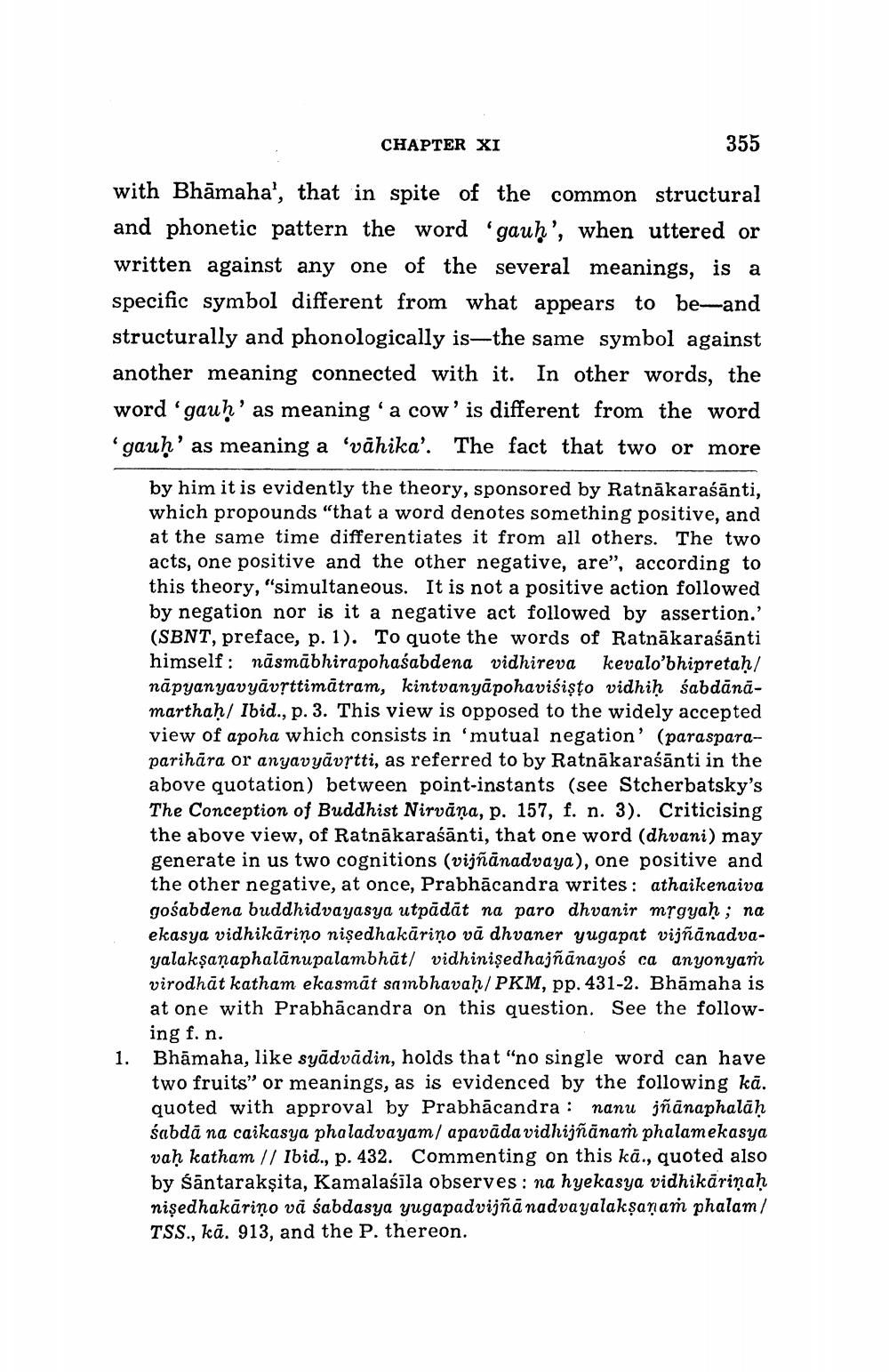________________
CHAPTER XI
355
with Bhāmaha', that in spite of the common structural and phonetic pattern the word 'gauh', when uttered or written against any one of the several meanings, is a specific symbol different from what appears to be-and structurally and phonologically is—the same symbol against another meaning connected with it. In other words, the word 'gauh' as meaning a cow' is different from the word 'gauḥ' as meaning a 'vähika'. The fact that two or more
by him it is evidently the theory, sponsored by Ratnākaraśānti, which propounds "that a word denotes something positive, and at the same time differentiates it from all others. The two acts, one positive and the other negative, are”, according to this theory, "simultaneous. It is not a positive action followed by negation nor is it a negative act followed by assertion.' (SBNT, preface, p. 1). To quote the words of Ratnākaraśānti himself: nāsmābhirapohaśabdena vidhireva kevalo'bhipretaḥ/ nāpyanyavyāvsttimātram, kintvanyāpohavisişto vidhiḥ śabdānāmarthaḥ/ Ibid., p. 3. This view is opposed to the widely accepted view of apoha which consists in mutual negation' (parasparaparihara or anyavyāvrtti, as referred to by Ratnākaraśānti in the above quotation) between point-instants (see Stcherbatsky's The Conception of Buddhist Nirvana, p. 157, f. n. 3). Criticising the above view, of Ratnākaraśānti, that one word (dhvani) may generate in us two cognitions (vijñānadvaya), one positive and the other negative, at once, Prabhācandra writes: athaikenaiva gośabdena buddhidvayasya utpādāt na paro dhvanir mrgyaḥ; na ekasya vidhikariņo nişedhakāriņo vă dhvaner yugapat vijñānadvayalakṣaṇaphalānupalambhāt/ vidhinişedhajñānayoś ca anyonyam virodhāt katham ekasmāt sambhavaḥ/ PKM, pp. 431-2. Bhāmaha is at one with Prabhācandra on this question. See the following f. n. Bhāmaha, like syādvādin, holds that "no single word can have two fruits" or meanings, as is evidenced by the following kā. quoted with approval by Prabhācandra : nanu jñānaphalāḥ śabda na caikasya phaladvayam/ apavāda vidhijñānam phalamekasya vaḥ katham // Ibid., p. 432. Commenting on this kā., quoted also by śāntarakṣita, Kamalaśīla observes: na hyekasya vidhikariņaḥ nişedhakariņo va sabdasya yugapadvijñā nadvayalaksanaṁ phalam/ TSS., kā. 913, and the P. thereon.




